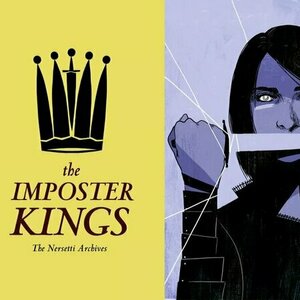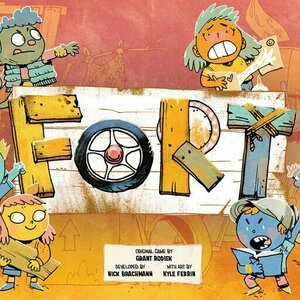Purple Phoenix Games (2266 KP) rated The Imposter Kings in Tabletop Games
May 1, 2021
DISCLAIMER: We were provided a copy of this game for the purposes of this review. This is a retail copy of the game, so what you see in these photos is exactly what would be received in your box. I do not intend to cover every single rule included in the rulebook, but will describe the overall game flow and major rule set so that our readers may get a sense of how the game plays. For more in depth rules, you may purchase a copy online or from your FLGS. -L
The Imposter Kings is a card game for 2-4 players in which players are attempting to gain and maintain control of the throne, accumulating a total of 7 points to win the game. There are some slight rules variations between 2-, 3-, and 4-player games, but the overall gameplay is the same. This review will focus on the 2-player rules. To setup for the game, assemble the deck as described in the rules for your chosen player count. In a 2-player game, the deck is comprised of 18 cards. Each player is given a King card, and one player’s will be the True King. The True King merely determines the first player for the round. Shuffle the deck and deal 8 cards to each player. There will be 2 cards leftover, and those will go into the center of the play area, one face-up and one face-down. This lets the players know which card is not in either players hand, as well as a random unknown card in neither players’ hand. Each player will select a card from their hand to be their Successor, and will place it face-down next to their King, and they will also select one card from their hand to discard face-down. The game is now ready to begin!
On your turn, you will play any card from your hand to the Court (play area) that is of an equal or higher value than the card played previously. The last-played card to the Court is considered to be on the Throne. All cards in Imposter Kings are numbered 1-9, and each card has an associated special ability. Once you play a card to the Court, you may/must use the ability (if optional/mandatory). These special abilities can alter the Court and gameplay by Disgracing cards (flipping them face-down to ‘reset’ the number line), swapping cards with other players, playing a lower-numbered card on top of a higher number etc. The round continues in this fashion, with players alternating, until one player is no longer able to play a card to the Court. That player loses the round, and the winning player receives a number of points, depending on certain aspects. The deck is reshuffled, the True King is passed to the loser of the round, and a new round commences. The first player to reach 7 points is the ultimate winner!
That details the basics of the gameplay, but there are a few special things to keep in mind. Certain cards will force players to play a card to their Antechamber – face-up in front of them. If ever you have a card in your Antechamber at the beginning of a turn, you must play it to the Court, regardless of its value. This can be a good strategic way to trap your opponent into playing a specific card on their next turn! Sometimes a card will need to be Condemned – it is then placed face-down in front of you, and then removed from play on your next turn. Another good way to eat up an opponent’s turn! If you ever get to a point in the round when you are unable to play a card to the Court, you may choose to use your King power – it allows you to flip your King over to Disgrace the card currently on the Throne, and take your Successor into your hand (hopefully giving you a chance to keep playing in the round!). However, there is an Assassin card in the game!! If you have the Assassin, you can reveal it when your opponent decides to use their King – thus assassinating them and immediately winning the round. Lots of tricksy ways to make sure you end up on the Throne!
So all in all, how does The Imposter Kings hold up? Fairly well, actually. For being a simple and relatively fast card game, there is a lot of strategy required for success. You have to decide which cards/powers to use when, while also trying to deduce what your opponent has in their hand. Can you trap them and force the round to end? Or have they kept a dark horse in hand for just this situation? There is a lot more to The Imposter Kings than meets the eye, and that makes it a fun challenge. The first time I played this game, it reminded me of a similar game by ButtonShy titled Hierarchy. The concept and gameplay are similar, but the biggest difference is that The Imposter Kings can be played with 3 and 4 players. That adds another element of strategy/chaos to the game, as there are more cards to deduce, more opportunities for the Court to change between your turns, and just more strategy in general. Hierarchy is strictly a 2-player game, but The Imposter Kings allows you to play with more people. With higher player counts, new and unique cards are added to the starting deck, offering even more abilities and strategic options for play. The gameplay scales with player count, and that keeps it engaging.
Let me touch on components for a minute. This is a retail version of the game, and the production quality is very nice! The game comes in a nice small box, and the deck of cards is sturdy in hand. The artwork is interesting, the text is clear, and the cards are color-coded based on their value. The coloring really helps with quick visual identification of what cards are in play. The game also comes with some reference cards for the various abilities, and those were much appreciated. The rulebook had a couple of areas of ambiguity, but watching the videos on the BGG page for The Imposter Kings helped answer any questions I might have had. All in all, good production quality!
So as you can probably tell from this review, I generally like The Imposter Kings. The gameplay is strategic, engaging, and its 3-4 player variants offer some unique twists that the 2-player just cannot handle. This is a game that I can see myself bringing out when I have newer gamers at my table. The gameplay is simple, yet strategic, and it is not overwhelming to learn or play. It definitely makes players think, and even now I’m thinking about what strategy I might try next game. If you are looking for something relatively simple, yet surprisingly strategic, consider checking out The Imposter Kings. Purple Phoenix Games gives it a royal 8 / 12.
Purple Phoenix Games (2266 KP) rated Fort in Tabletop Games
Jul 27, 2021
Fort is a hand management, deck-building game with a follow mechanic for two to four players. In it, players are assuming the roles of everyday kids trying to build their forts, play with their toys, and eat pizza with their buddies. The winner of the game is they who is able to score the most victory points (VP) at the end of the game, which can end in one of three different fashions.
DISCLAIMER: We were provided a copy of this game for the purposes of this review. This is a retail copy of the game, so what you see in these photos is exactly what would be received in your box. I do not intend to cover every single rule included in the rulebook, but will describe the overall game flow and major rule set so that our readers may get a sense of how the game plays. For more in depth rules, you may purchase a copy online or from your FLGS. -T
To setup, each player chooses a player color and takes all items belonging to them, including the Best Friends cards from the stack. Every other component is then separated by type and cards shuffled. Per the rules, some decks of cards will only have a certain amount on the table, whereas the main deck of kid cards is always used. Each player will draw eight kid cards from the deck to add to their Best Friends and shuffle them. They will also place their score markers on the 0 space of the Victory Track board. Randomly determine the starting player and give them the coveted First Player card, and the game may now begin!
Fort is played in turns, with each turn consisting of five phases (the first phase is skipped on the first turn). The first phase is Cleanup. To Cleanup, the active player takes all kid cards remaining in their Yard and places them in their own discard pile. Next, the active player will Play a kid card from their hand. On each card is a space for up to two actions to be taken: the public action on top and the private action on bottom. The player may complete both, but MUST complete at least one of the actions in its entirety. If using the public action of the card, then other players at the table may also follow the action by discarding one card of the matching suit of the card originally played. However, the leader (active player) may also play additional cards from their hand, of the same suit, in order to boost the effects of the actions. Followers may not. These actions include gaining “stuff” (pizza and toys) to be placed in their Stuff area or backpack, trashing cards in their hands, or gaining VP.
After the players have Played cards, the next phase is Recruit. The active player may choose any kid card that exists in the Park (the space underneath the Victory Track that is always full of kids), another player’s Yard (the space above the player’s main board that they neglected to play with their previous turn), or they may simply draw a kid card blindly from the Park deck. These kids are sent directly to the discard pile to be drawn on a later turn.
Finally, phases four and five end a player’s turn. Phase four is Discard, where the active player will discard all their Best Friends, kid cards they played this turn, and recruited kids. The kid cards leftover that were not used are sent to the player’s Yard above their main boards to possibly be stolen by another player during their Recruit phase. After Discarding, the final phase is Draw, where the active player will draw another hand of five cards to prepare to follow other players and to prepare for the next round. Fort continues in this fashion of each player taking turns and following others’ actions until one player earns 25 VP on the track, any player increases their Fort to level 5, or the Park deck becomes empty. All players will finish their turns so that they all have played an equal amount of turns, and then the players total their scores to crown the winner!
Components. This game has super great components. The little pizza and toys bits are awesome, the double-layered boards are cool, and the art is amazing as well. If it looks familiar in style, it’s because you have seen this art on Root, Oath, and Vast, among others. I love it so much and it is a perfect match for this theme. I really have little negative to say about Fort except that I wish the player colors were different. The orange and yellow are a little close in hue, and the brownish/olive is drab. Everything else, though, *chef’s kiss.
It is probably no surprise why I love this one. Deck-building has long been one of my favorite mechanics, and I have always enjoyed the follow mechanic found in Tiny Epic Galaxies and Villages of Valeria. Mix those up with much more going on and an excellent theme and it’s definitely a big time winner for me. I think what puts me over the edge here is that cards can be used for a couple different actions, and they can be boosted with the right strategies. Get your deck in order to really maximize each turn and the game opens up for you. Several times I have been able to focus my deck and really pound some powerful abilities, but it certainly doesn’t always work out for me, especially when others catch on to what I am doing and hate-draft me into other tactics.
If you are into a fresh new look at deck-building and enjoy more wacky themes, as I do, then I urge you to check out Fort. Officially, Purple Phoenix Games gives this one a playful 5 / 6, but even though it probably won’t break into my Top 10, I do think it will come to the table more often than most games in my Top 10. So should I reconsider my Top 10? Hmm. Anyway, Fort is awesome and everyone I have played with seem to agree with me. So grab a copy or two for yourself. Heck, the gift-giving season is fast approaching, and I know these fit very well under trees and other significant symbols of festivities…
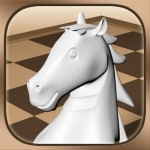
Chess Prime 3D
Games and Education
App
Chess Prime 3D is one of the best designed 3D chess games for the iPad / iPhone. It provides...
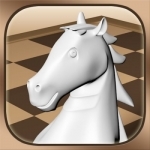
Chess Prime 3D Pro
Games and Education
App
Chess Prime 3D is one of the best designed 3D chess games for the iPad / iPhone. It provides...
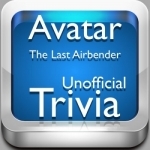
"Avatar the Last Airbender Edition" King's App Trivia
Games and Entertainment
App
If you enjoy Nickelodeon's Avatar: the Last Airbender series,, this is the app for you! Test your...

Planes, Passports and Porkie Pies - Slice One: Stirring Tales of UK Border Control (but Not as Shown on TV)
Book
Mike Clarke worked for 18 years in Immigration Control in London's larger airports, the last 9 as a...

Post-War Business Planners in the United States, 1939-48: The Rise of the Corporate Moderates
Book
During the Second World War several independent business organizations in the US devoted...
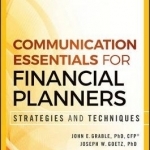
Communication Essentials for Financial Planners: Strategies and Techniques
John E. Grable and Joseph W. Goetz
Book
Exploring the Human Element of Financial Planning Communication Essentials for Financial Planners...

Connecting Places, Connecting People: A Paradigm for Urban Living in the 21st Century
Robert Cervero and Reena Tiwari
Book
What is a better community? How can we reconfigure places and transport networks to create...
Getting Started with Handplanes: How to Choose, Set Up, and Use Planes for Fantastic Results
Book
With this book and a well-chosen and correctly maintained set of planes, you will be able to handle...
